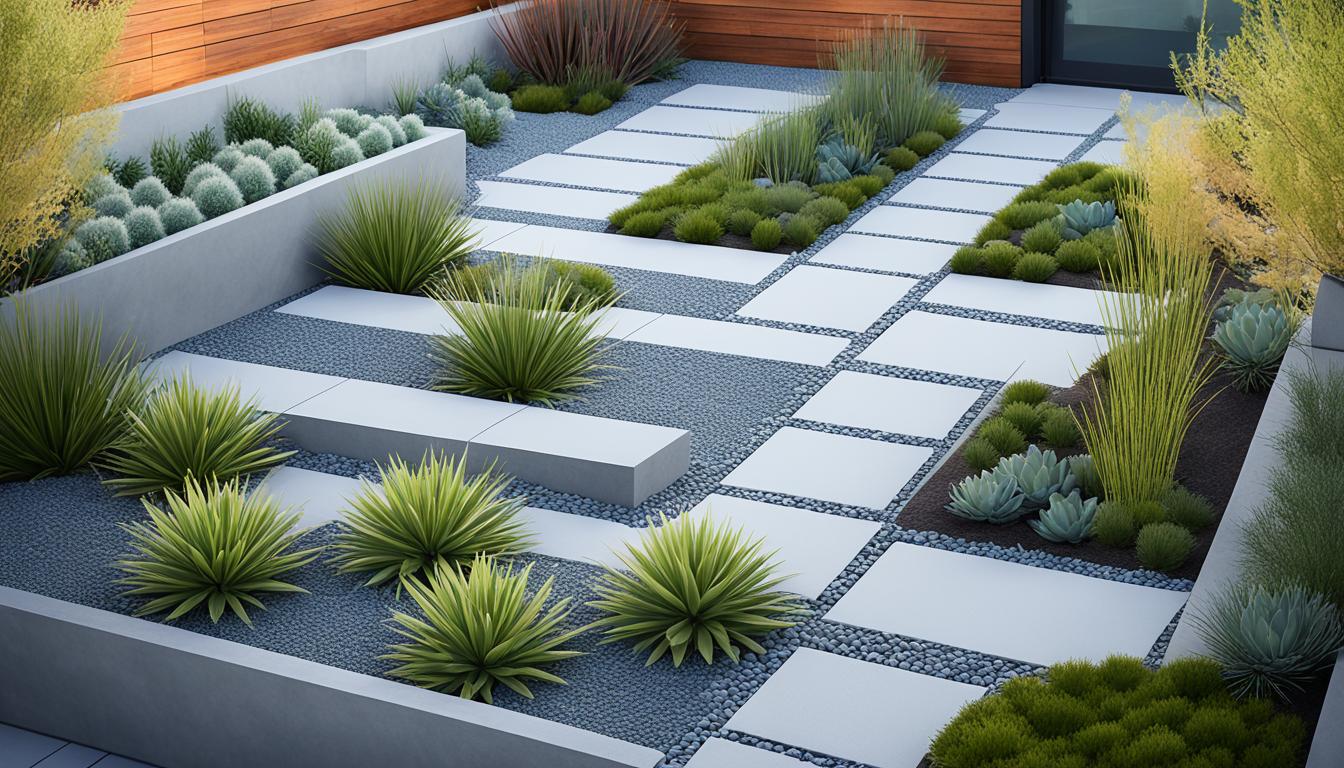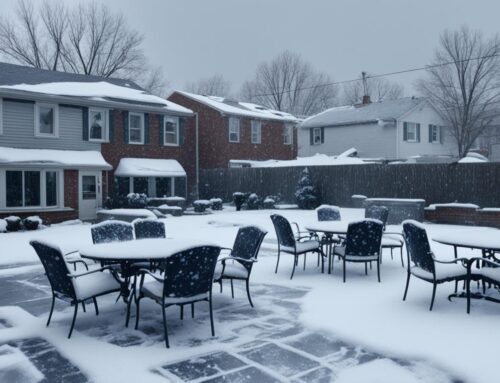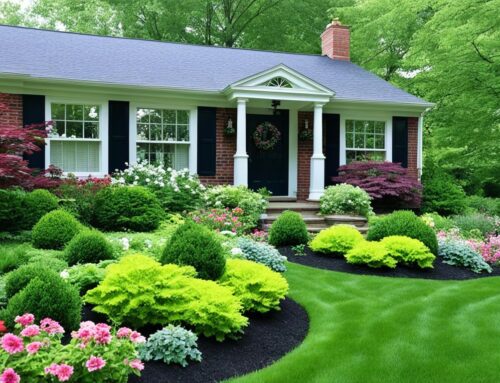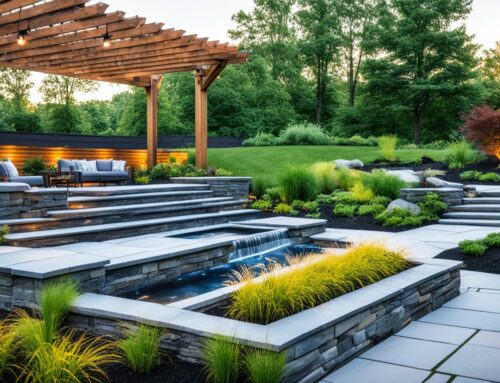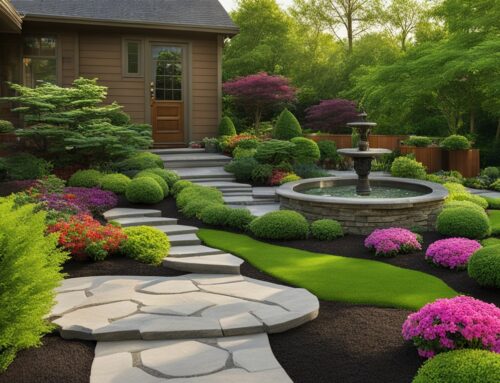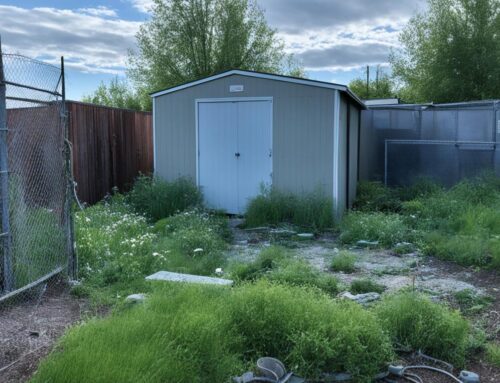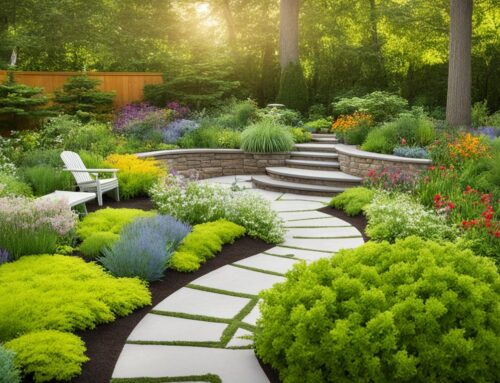Are you looking to transform your outdoor space into a stunning retreat? Curious about the latest trends in landscape design that can elevate your garden to the next level? Look no further! In this article, we will explore the current landscape design trends that are revolutionizing outdoor living spaces and inspiring homeowners across the United States.
From innovative garden designs to exciting landscaping ideas, we will provide you with the inspiration you need to create a truly remarkable outdoor living experience. Discover how to make the most of your garden and turn it into a personal oasis that reflects your style and enhances your connection with nature.
Key Takeaways:
- Stay up-to-date with the latest landscape design trends to create a remarkable outdoor living space.
- Explore innovative garden designs that merge functionality and aesthetics.
- Discover exciting landscaping ideas to transform your garden into a personal oasis.
- Enhance your connection with nature and make the most of your outdoor space.
- Get inspired to elevate your landscape design and unleash the full potential of your garden.
Creating Sustainable Garden Designs
In recent years, sustainable garden designs have gained immense popularity as more homeowners and landscape architects prioritize environmental responsibility. These designs incorporate various eco-friendly elements and practices, making them a great choice for those looking to create a beautiful and sustainable outdoor space.
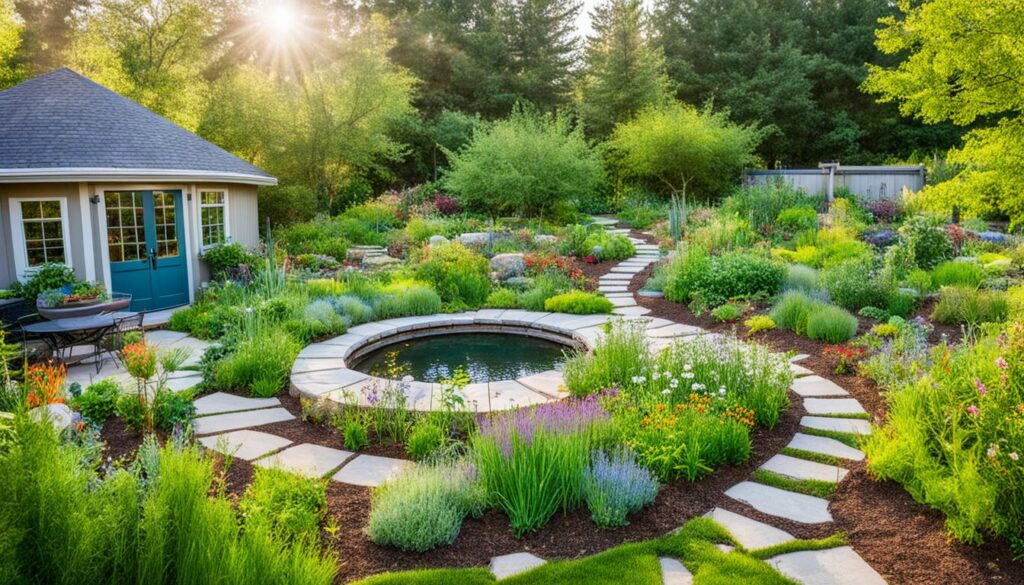
Environmentally-Friendly Elements
Sustainable garden designs focus on utilizing eco-friendly elements that minimize negative impacts on the environment. One key aspect is the use of native plants, which are well-adapted to the local climate and require less water, fertilizer, and maintenance compared to non-native species.
In addition to native plants, sustainable garden designs often incorporate rainwater harvesting systems. These systems collect and store rainwater, which can then be used to irrigate the garden, reducing the reliance on traditional water sources. The use of permeable paving materials is another feature that promotes water conservation by allowing rainwater to percolate into the soil rather than running off into storm drains.
The Role of Landscape Architecture
Landscape architecture plays a crucial role in creating functional and visually appealing sustainable garden designs. By considering factors such as site conditions, sun exposure, soil type, and water availability, landscape architects can design spaces that maximize the use of natural resources and minimize environmental impact.
They strategically plan the layout of plants, incorporating elements such as shade trees to provide relief from the sun, windbreaks to reduce cooling needs, and proper plant spacing to optimize water usage. They also design efficient irrigation systems that deliver water directly to the plant roots, reducing water waste. Additionally, landscape architects may integrate sustainable materials in hardscaping elements such as paths, patios, and retaining walls, further enhancing the overall sustainability of the garden.
Harmonizing with the Environment
Sustainable garden designs aim to harmonize with the surrounding environment, seamlessly blending outdoor spaces with nature. By incorporating native plants and eco-friendly elements, these designs support local ecosystems, attract beneficial wildlife, and reduce the need for chemical pesticides.
“Creating sustainable garden designs allows us to contribute to a healthier environment while still enjoying beautiful outdoor spaces. By incorporating eco-friendly elements and working with landscape architects, we can create gardens that not only look stunning but also help preserve the natural world.”
Whether you’re a homeowner or a landscape architect, embracing sustainable garden designs is a step towards creating a greener and more sustainable future. By prioritizing environmental responsibility and utilizing the expertise of landscape architects, we can design outdoor spaces that are both aesthetically pleasing and in harmony with nature.
Transforming Front Yards with Thoughtful Design
In recent years, front yard landscaping has undergone a remarkable transformation. Gone are the days of plain green lawns; homeowners are now prioritizing imaginative and inviting spaces that make a statement. A key aspect of this transformation lies in the use of thoughtful design techniques, particularly hardscaping. Hardscaping involves incorporating non-plant elements into the landscape, such as decorative pathways, stone features, and strategic plant placement, to create beautiful and functional front yards.
With hardscaping, front yards become more than just a passageway to the front door. They become a visually striking first impression that sets the tone for the entire property. Decorative pathways, for example, can guide visitors through the front yard, adding a touch of charm and elegance to the space. Stone features, such as retaining walls, can add dimension and texture, enhancing the overall aesthetic appeal.
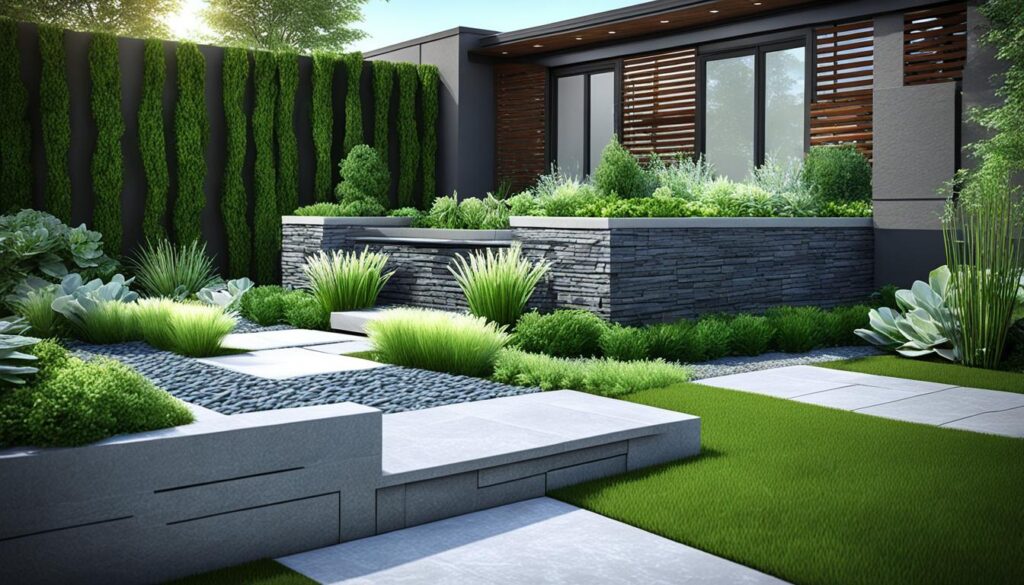
Strategic plant placement is another important aspect of front yard landscaping. By strategically planting trees, shrubs, and flowers, homeowners can create focal points and visually interesting arrangements. This not only adds beauty to the front yard but also enhances privacy and creates a welcoming atmosphere for both residents and visitors.
Furthermore, hardscaping elements in front yard landscaping allow for practical considerations as well. For instance, incorporating a seating area or a small patio allows homeowners to enjoy their front yard space and encourages social interaction with neighbors. Additionally, integrating outdoor lighting fixtures can enhance safety and security while also accentuating the beauty of the front yard during evening hours.
Benefits of Front Yard Hardscaping
The use of hardscaping elements in front yard landscaping offers several benefits to homeowners:
- Increased curb appeal: Hardscaping features add visual interest and aesthetic appeal, making your front yard stand out in the neighborhood.
- Reduced maintenance: Hardscape elements require minimal upkeep compared to traditional grass lawns, saving you time and effort in maintenance tasks.
- Enhanced functionality: By incorporating seating areas, pathways, and other hardscape elements, you can create functional spaces that are enjoyable and usable.
- Improved property value: A well-designed and maintained front yard with hardscaping elements can significantly increase the value of your property.
Transform your front yard into a stunning outdoor space that reflects your personal style and adds value to your home. With thoughtful design and the right hardscaping elements, you can create a front yard that delights both residents and visitors.
Conclusion
In conclusion, the world of landscape design is constantly evolving, presenting homeowners and businesses with endless opportunities to transform their outdoor spaces. Whether you’re planning a backyard makeover or looking to enhance your front yard, incorporating the latest landscape design trends can elevate your outdoor living experience.
From sustainable garden designs that prioritize environmental responsibility to thoughtful front yard landscaping that combines aesthetic beauty with functionality, there are numerous ways to create your dream outdoor space. Embracing hardscaping techniques, such as decorative pathways and strategic plant placement, can enhance both the appearance and usability of your front yard.
If you’re ready to bring your landscaping vision to life, we invite you to contact PurGreen Group. Our experienced team can provide you with a free landscaping estimate in Northeast Ohio, helping you kick-start your landscape design project. Don’t wait any longer to transform your outdoor space – give us a call at (440) 256-1800 and begin your journey to a stunning backyard makeover today!

